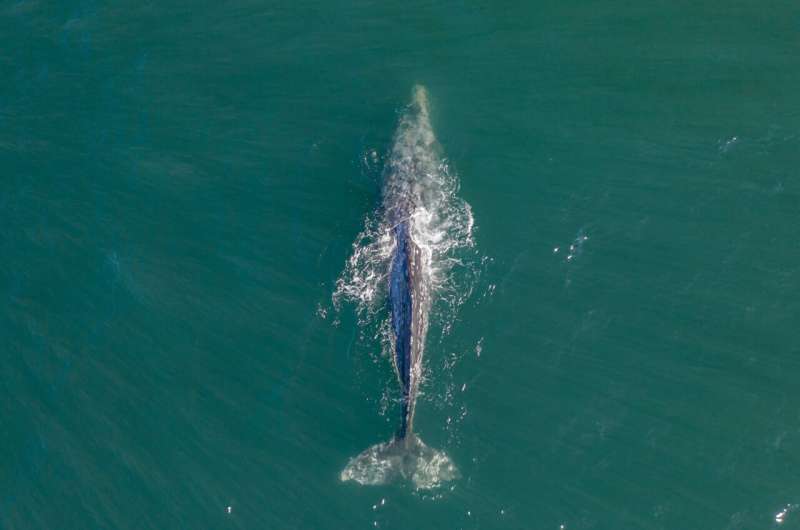Gray whale hormones give off distress signal

Certain hormones in gray whales could act as a distress signal, revealing how whales cope when it's harder for them to find food.
Florida International University (FIU) postdoctoral researcher in the Institute of Environment Leila Lemos found that T3—a thyroid hormone connected to metabolic activities—tends to increase when gray whales are stressed, skinny and malnourished.
This finding was somewhat unexpected. Previous studies on orcas and humpback whales have found that T3 increases with feeding. Lemos expected that the gray whales she studied off the coast of Oregon to have higher T3 levels when they had more access to food and were in better shape. But, they didn't.
"Depending on the season and its prey availability, whales could either be chubby and 'relaxed' or skinny and 'stressed,'" Lemos said. "We still found a negative relationship between body condition and cortisol levels, which was what was expected—meaning that skinnier and possibly hungry whales were more stressed than the chubby ones. According to the literature, we expected to find a positive correlation between T3 and body condition, but we found the opposite."
The reason for this is connected to the fact that T3 is also tied to other metabolic activities like the regulation of body temperature or the use of available energy sources. Since whales have blubber to keep their temperature steady, increased T3 in whales with poorer body condition could be tied to the use of carbohydrates as an energy source. A whale's T3 would increase when stressed, because it would need another energy source to survive, especially if food is scarce.
This study provides important insight into what happens inside of whales. After all, not much is known, because gathering samples to unravel the mystery is a bit of a challenge.
The particular sample Lemos was in search of requires a lot of waiting. First, she has to wait for the gray whales to appear and get close enough to her boat. Then, she has to wait for nature to call. Yes, she's waiting for them to poop.
For scientists like Lemos, the fecal samples are precious, because they reveal what the whales' body condition alone can't—what is happening with the hormones.
In total, Lemos collected more than 70 samples from 36 gray whales. The majority had higher levels of T3 and cortisol, which corresponds to environmental data that reveals changes that could have interfered with the whales' ability to find food.
More monitoring, like this, is urgently needed to provide a clearer understanding about the challenges whales face in today's rapidly changing environment—a fact that became more evident in the past few years after hundreds of gray whales stranded themselves.
"It's critically important to assess the physiological state of this population simultaneously with environmental data to identify potential causes for unusual, tragic events such as this," Lemos said. "This information can help us develop better conservation strategies to protect the species."
The findings were published in Marine Mammal Science.
No comments:
Post a Comment